#showaperiod
Text




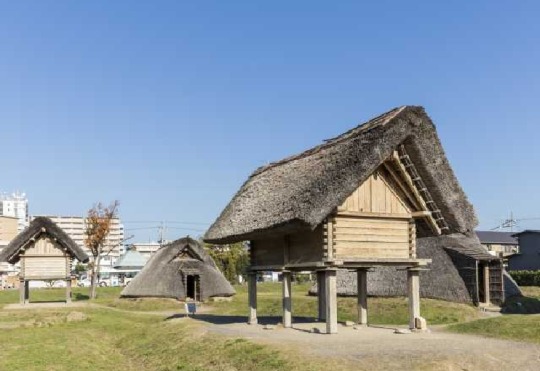

日本の考古学者を迎えての新しい合成回です。今回は登呂遺跡についてお話します。どうぞごゆっくりとお過ごしください。それでは、始めましょう。
-
中部地方静岡市にある登呂遺跡は、水害の被害を受けながらも、弥生時代に築かれ、1世紀から5世紀の弥生時代後期から古墳時代まで続く遺跡です。
-
遺跡が発見されたのは、昭和に当たる1943年の2ww中頃。
戦闘機のプロペラを作るための弾薬工場が建設されていたのですが、偶然にも地中から粘土や木製のものが見つかり、それ以来1999年代まで発掘調査が行われていました。 もっと話を聞きたいですか? コメントで教えてください。
-
お気に召していただけたなら幸いです。良い一週間をお過ごしください。また、日出ずる国から今後の記事でお会いしましょう。
-
Sean bienvenidos japonistasarqueológicos a una nueva entrega sintética de arqueología japonesa, en la cual hablaremos de Ruinas de Toro, una vez dicho esto pónganse cómodos que empezamos.
-
Ruinas de Toro, se localiza en la ciudad de Shizuoka, en la región de Chūbu, se construyó en el periodo Yayoi y continuaron desde finales del período dicho periodo hasta el período Kofun siglos I al siglo V, a pesar de que fueron dañadas por las inundaciones.
-
Las ruinas fueron descubiertas en plena 2ww en 1943 lo que corresponde a la era showa,
Se estaba construyendo, una fábrica de municiones para fabricar hélices para aviones de combate y accidentalmente encontramos objetos de barro y madera en el suelo, desde entonces se excavó hasta los años 1999. ¿Os gustaría que os contará más? déjenmelo saber en los comentarios.
-
Espero que os haya gustado os deseo una buena semana y nos vemos en próximas publicaciones del país del sol naciente.
-
Welcome Japanese archaeologists to a new synthetic installment of Japanese archaeology, in which we will talk about the Toro Ruins, so make yourselves comfortable and let's get started.
-
Toro Ruins, located in the city of Shizuoka, in the Chūbu region, was built in the Yayoi period and continued from the late Yayoi period to the Kofun period from the 1st to the 5th century, although it was damaged by floods.
-
The ruins were discovered in the middle of the 2ww in 1943 which corresponds to the showa era,
An ammunition factory was being built to make propellers for fighter planes and we accidentally found clay and wooden objects in the ground, since then it was excavated until the 1999's. Would you like me to tell you more? Let me know in the comments.
-
I hope you liked it, I wish you a good week and see you in future posts from the land of the rising sun.
-
More information: https://www.shizuoka-toromuseum.jp/zhcn/
#japan#shizuokacity#shizuokaprefecture#ToroRuins#showaperiod#chūburegion#archaeology#unesco#yayoiperiod#prehistory#kofunperiod#日本#静岡市#静岡県#登呂遺跡#昭和時代#中部地方#考古学#ユネスコ#弥生時代#先史時代#古墳時代
33 notes
·
View notes
Photo

Furumachi Geigi - Niigata 1920s by Blue Ruin 1
#1920s#japan#japanese#postcard#geiko#geisha#niigata#eri#kanzashi#geigi#showaperiod#taishoperiod#obiage#obidome#haneri#pocchiri#furumachigeigi
1 note
·
View note
Photo
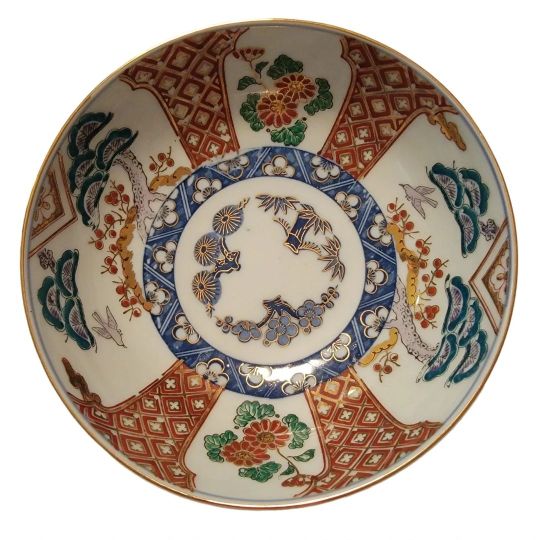
Japanese Showa Period Imari Polychrome Porcelain Bowl. This 20th Century bowl features blue, dark red, and green floral and bird designs with gold gilt throughout including the top edge. This bowl would make a great addition to your Asian decor. 7.25 inches in diameter. Free shipping within the Continental US. Responsible shipper. #imari #imaribowl #JapanesePorcelain #showaperiod https://www.instagram.com/p/CgfvYuwplDD/?igshid=NGJjMDIxMWI=
0 notes
Photo
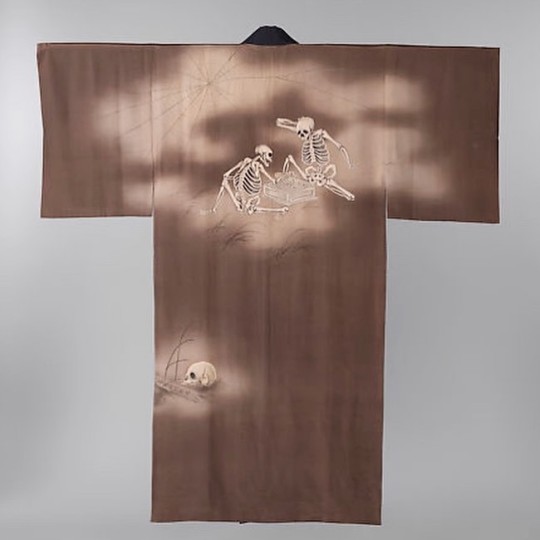
Under-kimono (Nagajuban)| Shōwa Period mid-20th century⠀ ——⠀ This man’s under-kimono (nagajuban) is made of dark olive-green crepe silk and decorated with yūzen paste-resist dyeing. The upper part of the back panels is embellished with two skeletons playing go (a traditional Asian board game). In the background of the scene is a delicately painted spider web. The skeletons are rendered in white, black and gray colors, while the background is light gray. Both the figures and their background are painted in softly graded tones. On the lower section of the right back panel a skull is depicted among grasses with a wooden plaque, which bears the inscription “Namu Amida Butsu” (南無阿弥陀仏 “Amitabha Buddha”). In Pure Land Buddhism, the recitation of “Namu Amida Butsu” signifies the speaker’s complete reliance on the compassion of Amitabha Buddha; the chanting of this mantra-like phrase (nenbutsu 念佛 “mindfulness of the Buddha”) is believed to allow rebirth in Amitabha’s Western Pure Land.⠀ ⠀ A nagajuban is worn beneath the kimono as undergarment, and not usually seen in public—only in informal settings, with family or friends. A nagajuban is usually shorter than the outer kimono, complete with the long kimono sleeves, which are neatly fitted inside the outer kimono's sleeves. As silk kimono often cannot be washed, the nagajuban helps keep the outer kimono clean by keeping it off the wearer's skin. Under-kimono are most often silk.⠀ (@metmuseum Accession Number:2014.723)⠀ —— #13daysofhalloween #kimono #japan #nagajuban #fashion #history #vintage #skeleton #spiderweb #🕸 #style #design #mode #moda #silk #museum #art #japaneseart #showaperiod https://www.instagram.com/p/B3-JHOygUg2/?igshid=114xa17z8mf6b
#13daysofhalloween#kimono#japan#nagajuban#fashion#history#vintage#skeleton#spiderweb#🕸#style#design#mode#moda#silk#museum#art#japaneseart#showaperiod
152 notes
·
View notes
Photo

Tastiera di un organo Kawai del periodo Shōwa. Keyboard of a Shōwa period Kawai organ. • 可愛楽器製作所の昭和時代のオルガンのキーボード。 ••• #organo #tastiera #tasti #tastibianchieneri #biancoenero #strumentimusicali #kawai #antiquariato #periodoshowa #organ #harmonium #keyboard #keys #blackandwhite #blackandwhitekeys #musicalinstrument #antique #showaperiod #retro #オルガン #キーボード #キー #白黒 #河合 #楽器 #昭和時代 #アンティーク #cerchio #circle #円 (高梁市郷土資料館) https://www.instagram.com/p/CKyv3tYFPzC/?igshid=2tjisq41p2um
#organo#tastiera#tasti#tastibianchieneri#biancoenero#strumentimusicali#kawai#antiquariato#periodoshowa#organ#harmonium#keyboard#keys#blackandwhite#blackandwhitekeys#musicalinstrument#antique#showaperiod#retro#オルガン#キーボード#キー#白黒#河合#楽器#昭和時代#アンティーク#cerchio#circle#円
0 notes
Photo

Mid Century Modern coffee set for six 🖤💛🤎 c1970 $85.00 Arrowstone stoneware by Kasuga Japan Zuni Maize matte glaze colour pattern Open by appointment 📞 Happy to pack n post 📦📮 #vintage #classic #modern #vintagestoneware #midcenturycoffeeset #showaperiod #arrowstonejapan #zunimaize #brunswickheads #shoplocalfeelgood #buylocal #brunswickheadsretail #doingbusinessdifferently #isoretailing #workingfromhome #byronbayinteriors #byronbayhomewares (at Brunswick Heads, New South Wales) https://www.instagram.com/p/B_yj2LmJqXc/?igshid=pnbrqwadosyf
#vintage#classic#modern#vintagestoneware#midcenturycoffeeset#showaperiod#arrowstonejapan#zunimaize#brunswickheads#shoplocalfeelgood#buylocal#brunswickheadsretail#doingbusinessdifferently#isoretailing#workingfromhome#byronbayinteriors#byronbayhomewares
0 notes
Photo
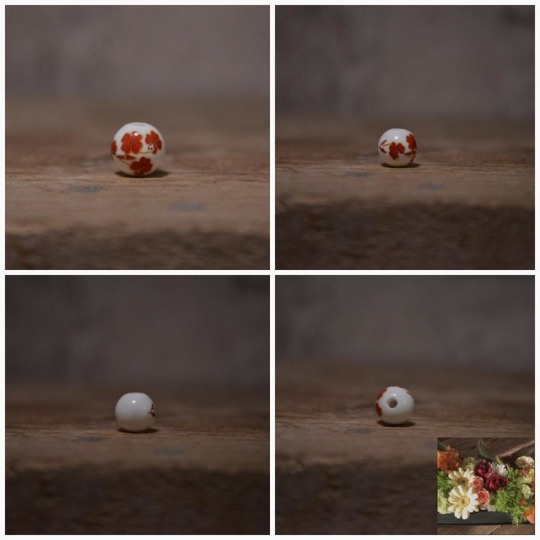
Taisho Showa Period Japanese Antique Glass Bead Ojime 6 for just $25.00 ・Item :Period Japanese Antique Glass Bead 6 # ojime netsuke inro sagemono ・Condition : Pre-owned. It's a very old antique. I list antiques that sometimes have cracks, chips and rubbings as they are really old antiques so please check the images and understand the current condition before purchasing. ・Material: Glass ・Dimension: See the last photo. 1 square is 1 cm. ・Age: Taisho- Showa For more my other items, https://www.etsy.com/jp/shop/wabisabihanabi?ref=seller-platform-mcnav ※ What you see is what you get. From a smoke-free home. Sold as-is. ※ Images' color are sometimes shown somewhat different from the real ones. ※ I translate the original description into English. I would like you to judge items not only from the description but also from yourself. I list items not to make you misunderstood but if you feel something strange in my listings, please tell me before buying. ※ I have just started etsy and have been learning what's best through trial and error, and doing my best to make you happier. If you have any questions, please feel free to ask me. I will respond as far as I know and as soon as possible. ※ I sometimes can not respond sooner as there is a time difference and I have another job in Japan. We appreciate your understanding and cooperation. Thank you. Shipping We ship by Epacket or EMS from Japan Post.( both have a tracking number) ※ We appreciate your understanding if it's delayed due to air transportation or any other situation. Payment Paypal only. Please make a payment within 3 business days. We will make the arrangement after your cleared payment. If you have any questions, please feel free to contact me. Thank you very much for reading until the end. Customs Import duties taxes and charges are not included in the price of goods or shipping charges. These costs are the responsibility of the buyer. Please check with your country's customs to determine what these additional costs will be prior to bidding / buying. Additional shipping charges please do not confuse them for - these costs usually cargo (shipping) or company has to offer when it is collected by and pick up objects. Shipping We ship by Epacket or EMS from Japan Post.( both have a tracking number) ※ We appreciate your understanding if it's delayed due to air transportation or any other situation. Payment Paypal only. Please make a payment within 3 business days. We will make the arrangement after your cleared payment. If you have any questions, please feel free to contact me. Thank you very much for reading until the end. Customs Import duties taxes and charges are not included in the price of goods or shipping charges. These costs are the responsibility of the buyer. Please check with your country's customs to determine what these additional costs will be prior to bidding / buying. Additional shipping charges please do not confuse them for - these costs usually cargo (shipping) or company has t...
#AntiqueGlassBead#DeerHorn#OjimeBead#StagAntlerNetsuke#TaishoPeriod#sagemono#JapaneseAntiqueBead#netsuke#ojime#ShowaPeriod
0 notes
Text


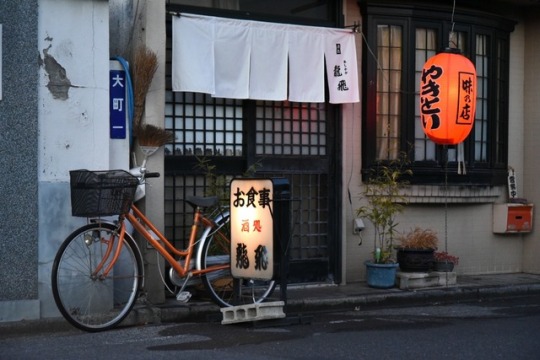

足利市をぶらぶら
0 notes
Photo

Japanese bronze Okimono grouping of two rabbits from the early Showa period (20th Century) at L’Asie Exotique www.lasieexotique.com #lasieexotique #asianantiques #japaneseantiques #japanesebronze #okimono #objetdart #ornament #interiordesign #showaperiod (at L'Asie Exotique)
#objetdart#lasieexotique#interiordesign#japanesebronze#japaneseantiques#showaperiod#asianantiques#ornament#okimono
0 notes
Text
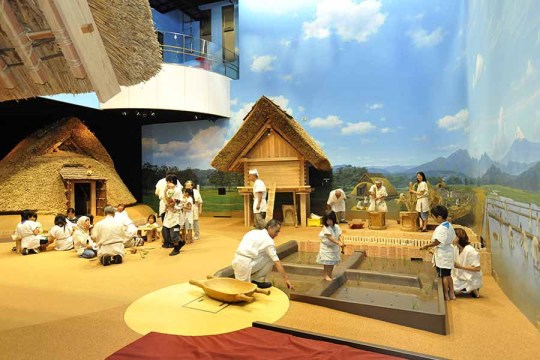
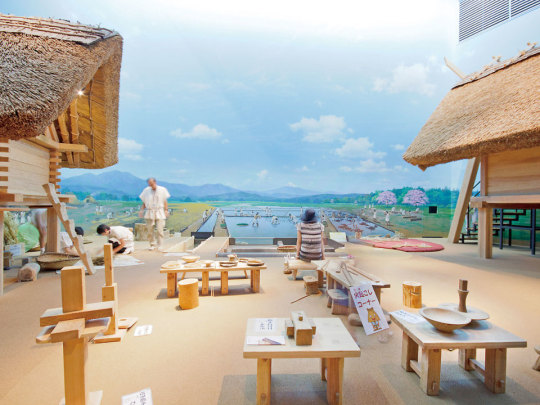

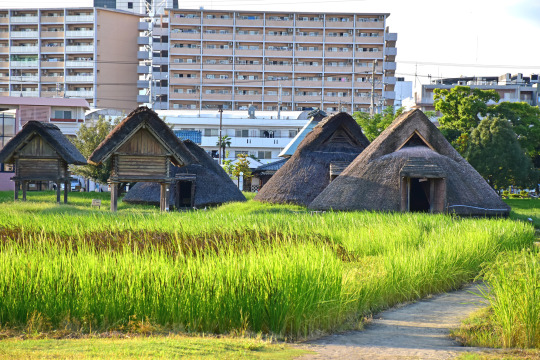
Sean bienvenidos japonistasarqueológicos a una nueva entrega de arqueología japonesa, en la cual hablaremos de Ruinas de Toro, una vez dicho esto pónganse cómodos que empezamos.
-
Ruinas de Toro, se localizan en la ciudad de Shizuoka, en la región de Chūbu, se construyeron en el periodo Yayoi y continuaron desde finales de dicho período e incluso se usaron el período Kofun siglos I al siglo V, a pesar de que fueron dañadas por las inundaciones.
-
En la publicación anterior hablamos, de que las ruinas fueron descubiertas en plena 2ww en 1943, lo que corresponde a la era showa, ya que se estaba construyendo, una fábrica de municiones para fabricar hélices para aviones de combate y accidentalmente encontramos objetos de barro y madera en el suelo, desde entonces se excavó hasta los años 1999.
-
Para continuar nuestro viaje por la arqueología de la posguerra, nos vamos a trasladar a la década de 1947, fue cuando se realizaron las excavaciones en masa hasta mitad del siglo pasado, en la que se descubrieron: 12 viviendas, 2 almacenes y 8 hectáreas de arrozales, del periodo Yayoi que datan de hace 2000 años de antigüedad.
-
También aparecieron: campanas de bronce, el lugar se reconstruyo en 1951. Por el motivo de una autopista en 1965 salieron más restos arqueológicos a lo que se le llama arqueología de salvamento, al final de 1999, se actuaron más excavaciones en otras partes del país en Kyushu, kinki y Tohoku hasta 2003.
-
Espero que os haya gustado os deseo una buena semana y nos vemos en próximas publicaciones del país del sol naciente.
-
日本の考古学者の皆さん、ようこそ!今回は登呂遺跡についてお話しします。そう言ったら、くつろいでいただき、さっそく始めましょう。-中部地方の静岡市にある登呂遺跡は、弥生時代に築かれ、弥生時代後期から続き、1世紀から5世紀にかけての古墳時代にも、洪水で被害を受けながらも利用されていた。-前号では、昭和に相当する2ww中頃、戦闘機のプロペラを製造する軍需工場が建設されている最中に発見され、偶然、土や木のオブジェが地面に落ちていたことを紹介したが、その後、平成11年代まで発掘調査が行われた。-戦後考古学の旅を続けるために、1947年の10年間に移り、前世紀半ばまで大規模な発掘調査が行われ、2000年前の弥生時代の住居12棟、倉庫2棟、水田8ヘクタールが発見された。-銅鐸も発見された。遺跡は1951年に再建された。1965年の高速道路建設により、さらに多くの遺跡が発掘され、サルベージ考古学と呼ばれている。 1999年末には、2003年まで九州、近畿、東北の他の地域でも発掘調査が行われた。-お気に召していただけたなら幸いである。良い一週間をお過ごしください。
-
Welcome Japanese archaeologists to a new installment of Japanese archaeology, in which we will talk about the Toro Ruins, and once we have said that, make yourselves comfortable and let's get started.
-
Toro Ruins, located in the city of Shizuoka, in the Chūbu region, were built in the Yayoi period and continued from the late Yayoi period and were even used in the Kofun period from the 1st to the 5th century, although they were damaged by floods.
-
In the previous publication we mentioned that the ruins were discovered in the middle of the 2ww in 1943, which corresponds to the showa era, as a munitions factory was being built to manufacture propellers for fighter planes and we accidentally found objects of clay and wood on the ground, since then it was excavated until the 1999s.
-
To continue our journey through post-war archaeology, we will move to the decade of 1947, when mass excavations were carried out until the middle of the last century, in which 12 dwellings, 2 warehouses and 8 hectares of rice fields were discovered, from the Yayoi period dating back to 2000 years ago.
-
Also discovered: bronze bells, the site was rebuilt in 1951. Due to the construction of a motorway in 1965, more archaeological remains were unearthed, which is called salvage archaeology. At the end of 1999, further excavations were carried out in other parts of the country in Kyushu, Kinki and Tohoku until 2003.
-
I hope you liked it, I wish you a good week and see you in future publications from the land of the rising sun.
-
More information: https://www.shizuoka-toromuseum.jp/zhcn/
#japan#shizuokacity#shizuokaprefecture#ToroRuins#showaperiod#chūburegion#archaeology#unesco#yayoiperiod#prehistory#kofunperiod#日本#静岡市#静岡県#登呂遺跡#昭和#中部地方#考古学#ユネスコ
35 notes
·
View notes
Photo

Lacquer Small chest of drawers Showa Japanese antiques tansu for just $85.00 Lacquer Small chest of drawers Showa Japanese antiques tansu I list antiques that sometimes have cracks, chips and rubbings as they are really old antiques so please check the images and understand the current condition before purchasing. I sell items on other sites as well. Please understand that sudden end sometimes occurs. Dimension ; height about 27 cm width about 23 cm depth about 21 cm ・Age: Unknown but very old Visit my store page, https://www.etsy.com/jp/shop/wabisabihanabi?ref=seller-platform-mcnav I put info of shipping way, payment and Customs on my profile. Please check it before bying.
#YaizuLacquer#JapaneseLunchBox#DrawersJapan#GoldLacquer#GoldLeaf#SmallChestJapan#JapaneseAntiques#lacquer#ShowaPeriod#LacquerChest
0 notes